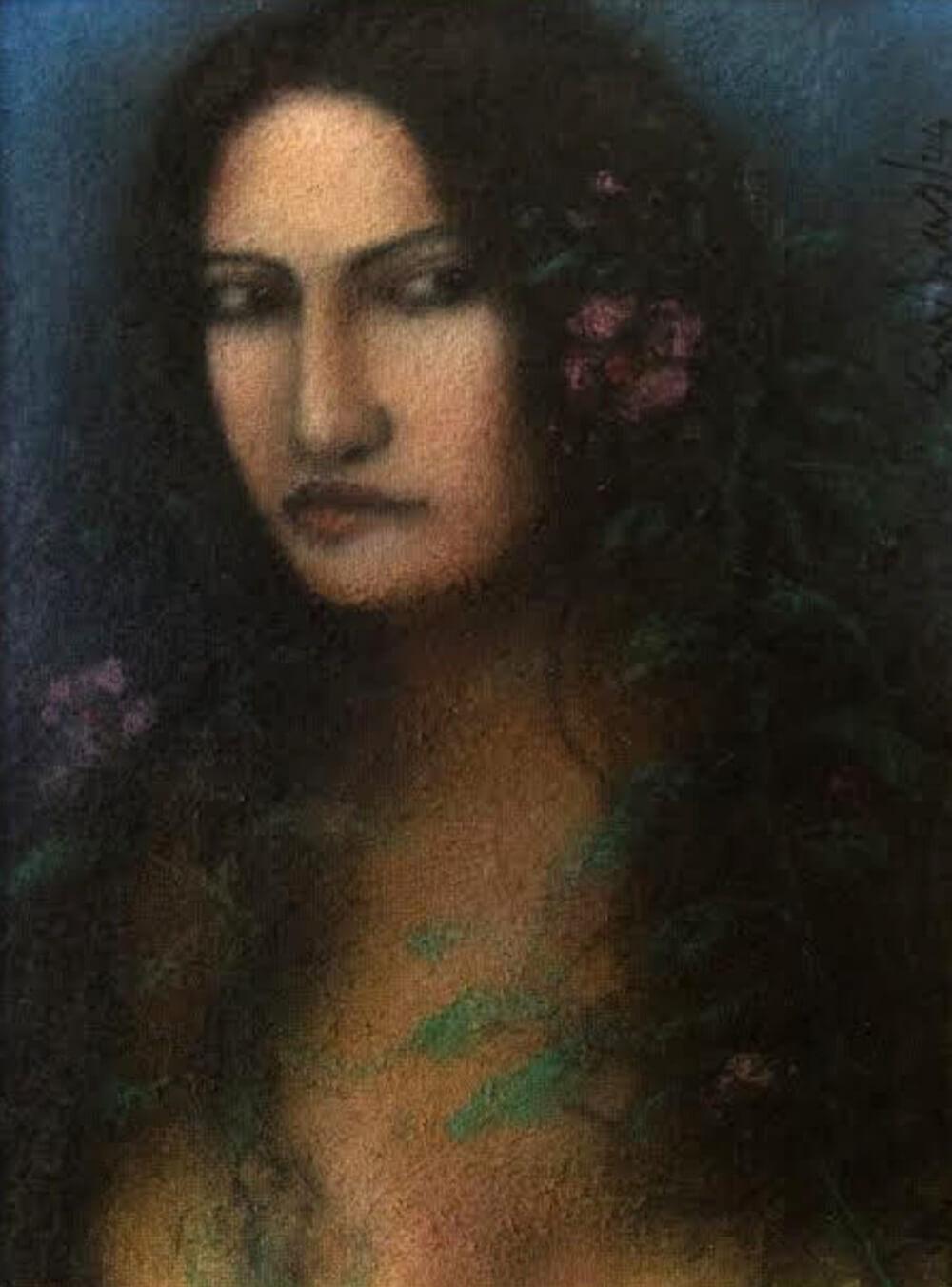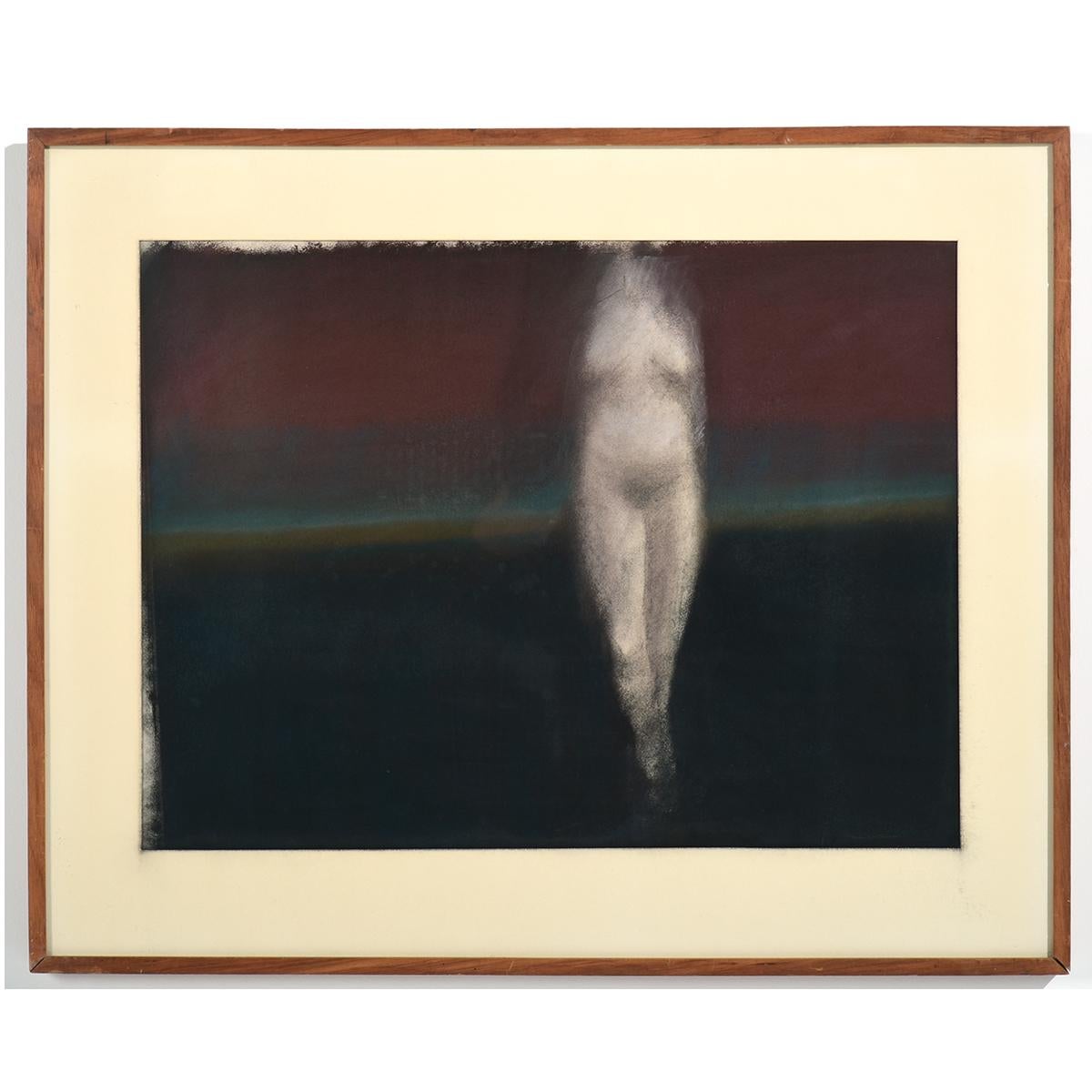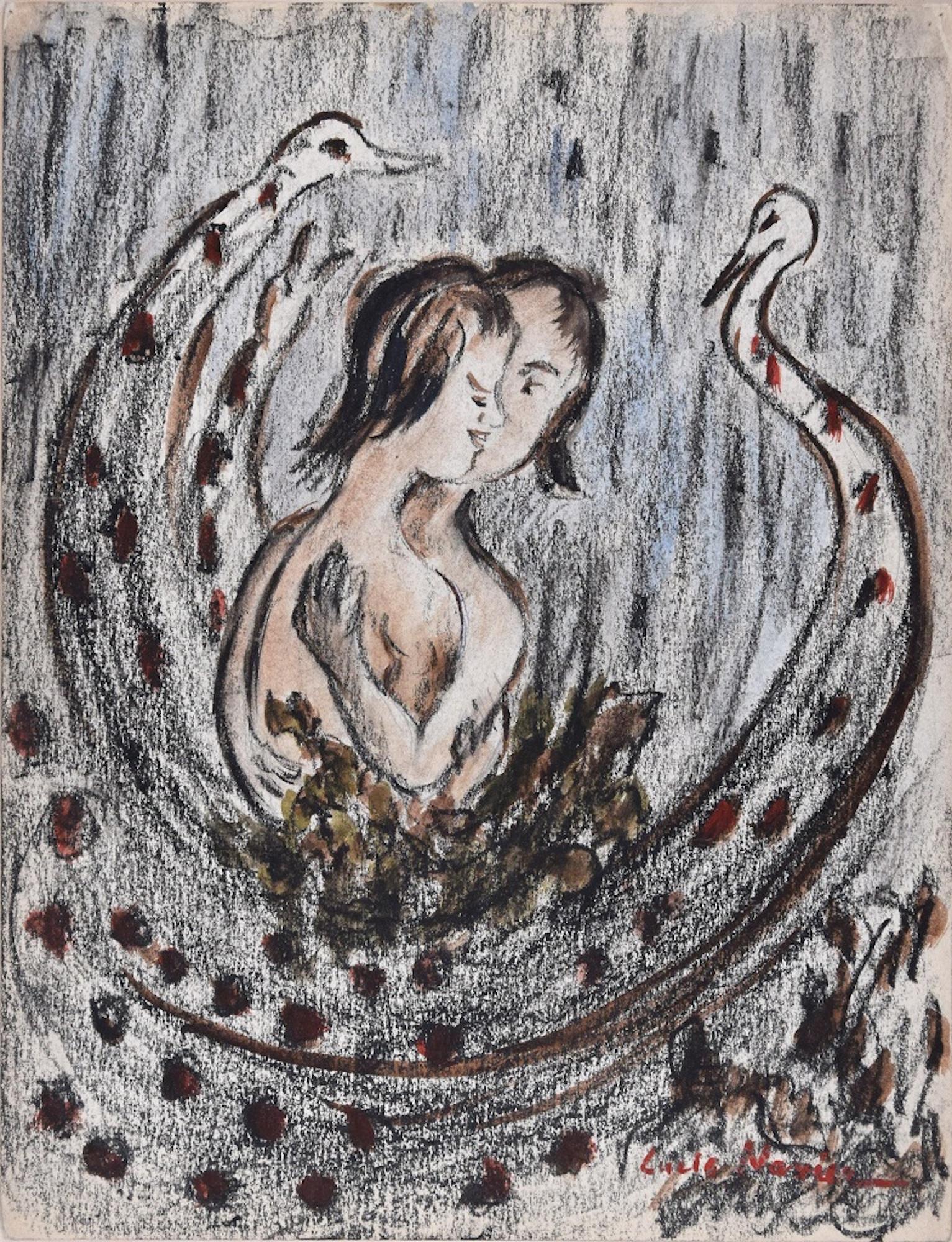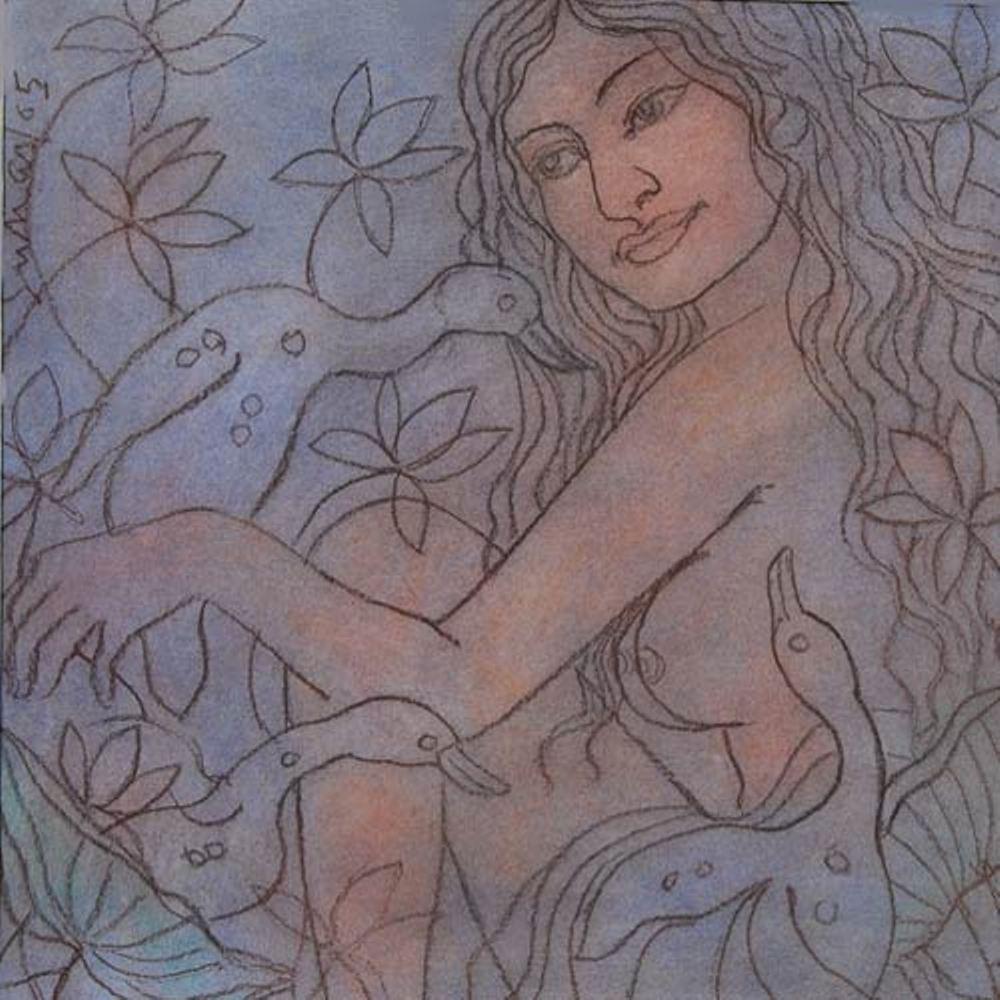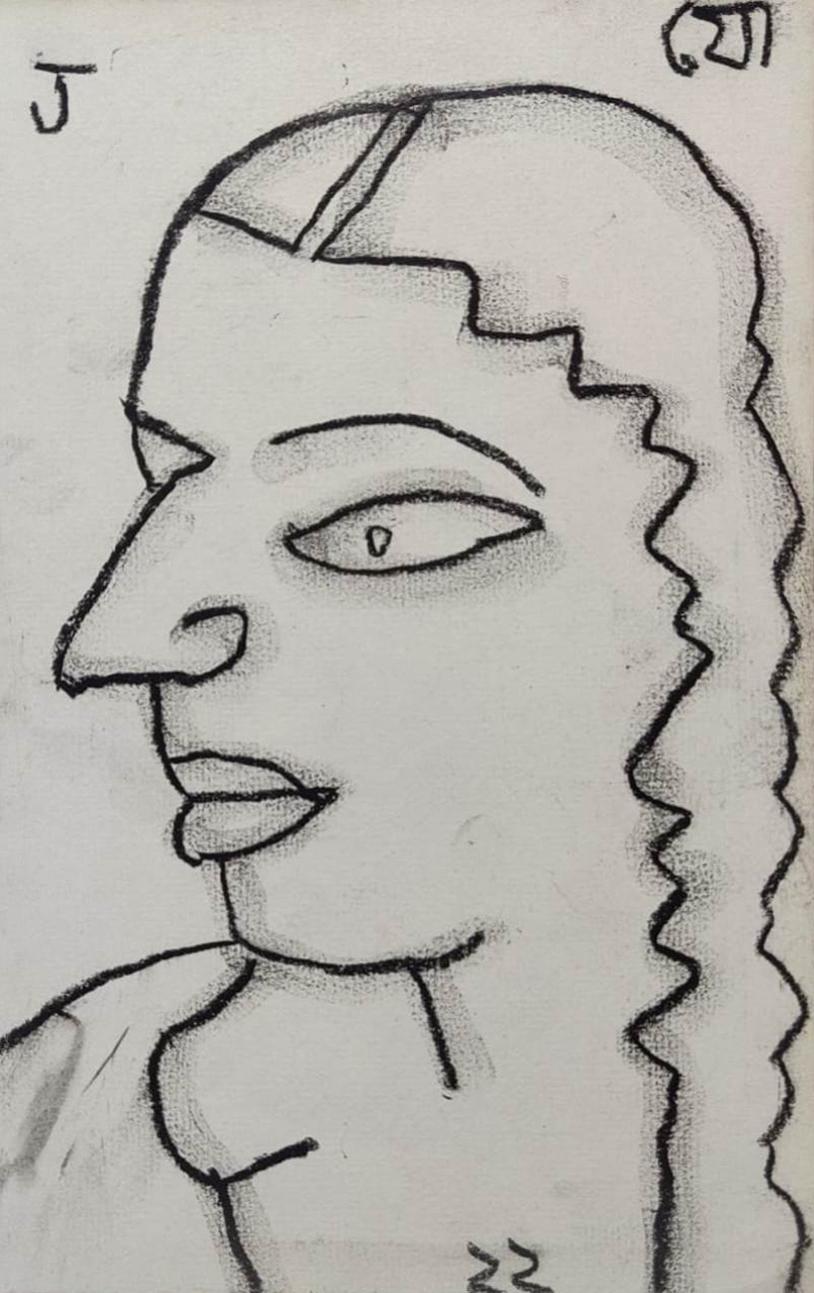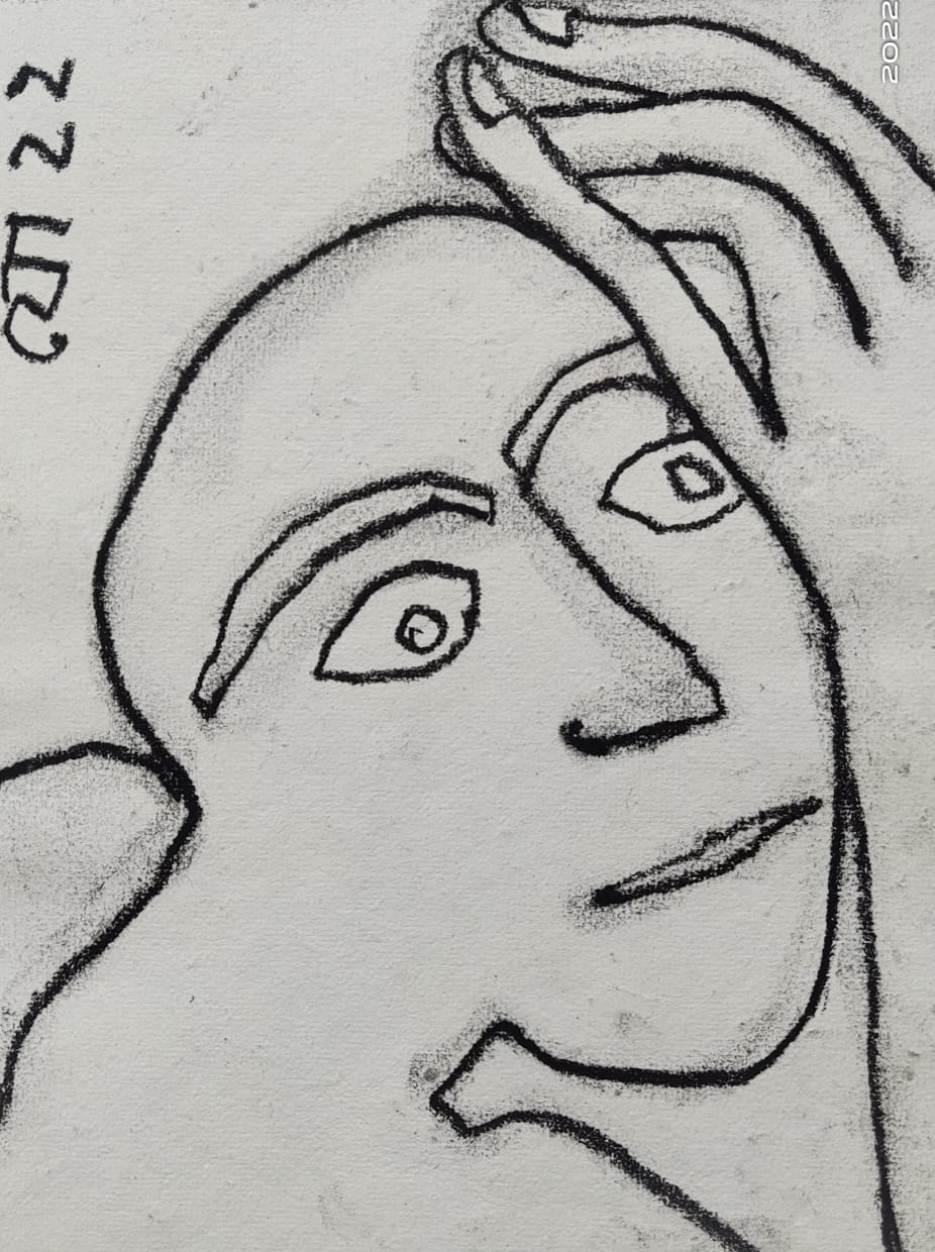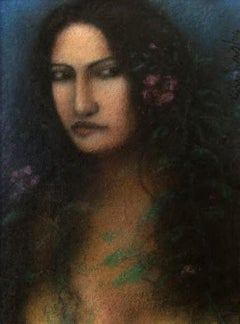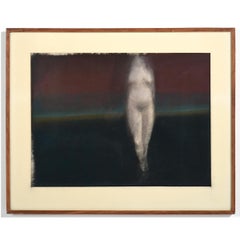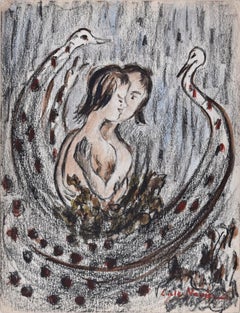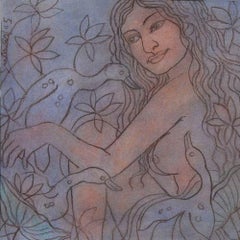Items Similar to Mexican Siesta Pastel Drawing Ecole D'Paris, WPA, Bezalel Artist
Want more images or videos?
Request additional images or videos from the seller
1 of 8
Jacques (Jakub) ZuckerMexican Siesta Pastel Drawing Ecole D'Paris, WPA, Bezalel Artistc.1930s
c.1930s
About the Item
Jacques Zucker was born in 1900 in Radom, Poland. He was a notably famous Jewish American artist mostly known for his expressionist figure paintings. In his young years he traveled to Palestine to study fine arts at the Bezalel Art School in Jerusalem. In 1917 he joined the British Royal Fuesiliers under the leadership of General Allenby to liberate Palestine from the Turks. After the first World War he settled in Paris, where he continued his studies at Académie Julian and Academie Colarossi. He then emigrated to the United States in 1922 and continued his art studies at the National Academy of Design. He supported himself by designing jewelry.
In 1925 he returned to Paris and studied at the Academie de la Grande Chaumier et Colarossi. During the Depression he worked for the WPA. From 1928 he took part in the Paris Salons: Autumn and the Tuileries. His works are expressionistic variations in the type of the Ecole de Paris. As a protégé of both Chaim Soutine and Renoir, hints of their style can be observed in much of his own work. Zucker’s style, that may have been influenced from the art of artists such as Marc Chagall, took pride in being an “internationalist”, standing the art of painting in its highest expression is universal no matter where the canvas was created.
People who respond to quality in art will understand the beauty and meaning, in their own land or in a foreign land, this was his main idea behind his artworks that was exhibited in numerous solo show in leading galleries and museums in New York, Paris, Tel Aviv, and other art centers. Claude Roger-Marx of Figaro Litteraire, dean of French art critics, write a comprehensive study of Zucker’s illustrated with 135 color and black and white plates. He traveled widely, including Italy, Spain, Portugal, Mexico and Israel. From then on Zucker lived alternately in New York and Paris, maintaining homes in both places, and spent considerable time painting in Mexico, Portugal, Greece, and Israel.
Zucker's post-impressionist works including town and landscapes, still-lives, and portraits, are part of an array of permanent installments in numerous museums and private collections in Tel Aviv, including the Joseph Hirschorn collection in Washington, D. C., the Museum of Modern Art in Paris, and the Bezalel Art Museum in Jerusalem. In 1947 he settled in Arcueil near Paris. Zucker died in 1981 in New York.
- Creator:Jacques (Jakub) Zucker (1900-1981, American)
- Creation Year:c.1930s
- Dimensions:Height: 10 in (25.4 cm)Width: 13 in (33.02 cm)
- Medium:
- Movement & Style:
- Period:
- Condition:minor rip / bending on top left edge.
- Gallery Location:Surfside, FL
- Reference Number:1stDibs: LU38210863772
About the Seller
4.9
Platinum Seller
Premium sellers with a 4.7+ rating and 24-hour response times
Established in 1995
1stDibs seller since 2014
1,760 sales on 1stDibs
Typical response time: 1 hour
- ShippingRetrieving quote...Shipping from: Surfside, FL
- Return Policy
Authenticity Guarantee
In the unlikely event there’s an issue with an item’s authenticity, contact us within 1 year for a full refund. DetailsMoney-Back Guarantee
If your item is not as described, is damaged in transit, or does not arrive, contact us within 7 days for a full refund. Details24-Hour Cancellation
You have a 24-hour grace period in which to reconsider your purchase, with no questions asked.Vetted Professional Sellers
Our world-class sellers must adhere to strict standards for service and quality, maintaining the integrity of our listings.Price-Match Guarantee
If you find that a seller listed the same item for a lower price elsewhere, we’ll match it.Trusted Global Delivery
Our best-in-class carrier network provides specialized shipping options worldwide, including custom delivery.More From This Seller
View AllRare Modernist Hungarian Rabbi Pastel Drawing Gouache Painting Judaica Art Deco
By Hugó Scheiber
Located in Surfside, FL
Rabbi in the synagogue at prayer wearing tallit and tefillin.
Hugó Scheiber (born 29 September 1873 in Budapest – died there 7 March 1950) was a Hungarian modernist painter.
Hugo Scheiber was brought from Budapest to Vienna at the age of eight where his father worked as a sign painter for the Prater Theater. At fifteen, he returned with his family to Budapest and began working during the day to help support them and attending painting classes at the School of Design in the evening, where Henrik Papp was one of his teachers. He completed his studies in 1900. His work was at first in a post-Impressionistic style but from 1910 onward showed his increasing interest in German Expressionism and Futurism. This made it of little interest to the conservative Hungarian art establishment.
However, in 1915 he met the great Italian avant-gardist Filippo Tommaso Marinetti and the two painters became close friends. Marinetti invited him to join the Futurist Movement. The uniquely modernist style that he developed was, however, closer to German Expressionism than to Futurism and eventually drifted toward an international art deco manner similar to Erté's. In 1919, he and his friend Béla Kádar held an exhibition at the Hevesy Salon in Vienna. It was a great success and at last caused the Budapest Art Museum to acquire some of Scheiber's drawings. Encouraged, Scheiber came back to live in Vienna in 1920.
A turning point in Scheiber's career came a year later, when Herwarth Walden, founder of Germany's leading avant-garde periodical, Der Sturm, and of the Sturm Gallery in Berlin, became interested in Scheiber's work. Scheiber moved to Berlin in 1922, and his paintings soon appeared regularly in Walden's magazine and elsewhere. Exhibitions of his work followed in London, Rome, La Paz, and New York.
Scheiber's move to Germany coincided with a significant exodus of Hungarian artists to Berlin, including Laszlo Moholy-Nagy and Sandor Bortnyik. There had been a major split in ideology among the Hungarian avant-garde. The Constructivist and leader of the Hungarian avantgarde, Lajos Kassák (painted by Hugó Scheiber in 1930) believed that art should relate to all the needs of contemporary humankind. Thus he refused to compromise the purity of his style to reflect the demands of either the ruling class or socialists and communists. The other camp believed that an artist should be a figurehead for social and political change.
The fall out and factions that resulted from this politicisation resulted in most of the Hungarian avant gardists leaving Vienna for Berlin. Hungarian émigrés made up one of the largest minority groups in the German capital and the influx of their painters had a significant effect on Hungarian and international art. Another turning point of Scheiber's career came in 1926, with the New York exhibition of the Société Anonyme, organized by Katherine Dreier. Scheiber and other important avant garde artists from more than twenty-three countries were represented. In 1933, Scheiber was invited by Marinetti to participate in the great meeting of the Futurists held in Rome in late April 1933, Mostra Nazionale d’Arte Futurista where he was received with great enthusiasm. Gradually, the Hungarian artists began to return home, particularly with the rise of Nazism in Germany. Kádar went back from Berlin in about 1932 and Scheiber followed in 1934.
He was then at the peak of his powers and had a special flair in depicting café and cabaret life in vivid colors, sturdily abstracted forms and spontaneous brush strokes. Scheiber depicted cosmopolitan modern life using stylized shapes and expressive colors. His preferred subjects were cabaret and street scenes, jazz musicians, flappers, and a series of self-portraits (usually with a cigar). his principal media being gouache and oil. He was a member of the prestigious New Society of Artists (KUT—Képzőművészek Új Társasága)and seems to have weathered Hungary's post–World War II transition to state-communism without difficulty. He continued to be well regarded, eventually even receiving the posthumous honor of having one of his images used for a Russian Soviet postage stamp (see image above). Hugó Scheiber died in Budapest in 1950.
Paintings by Hugó Scheiber form part of permanent museum collections in Budapest (Hungarian National Museum), Pecs (Jannus Pannonius Museum), Vienna, New York, Bern and elsewhere. His work has also been shown in many important exhibitions, including:
"The Nell Walden Collection," Kunsthaus Zürich (1945)
"Collection of the Société Anonyme," Yale University Art Gallery, New Haven, Connecticut (1950)
"Hugó Scheiber: A Commemorative Exhibition," Hungarian National Museum, Budapest (1964)
"Ungarische Avantgarde," Galleria del Levante, Munich (1971)
"Paris-Berlin 1900-1930," Centre Georges Pompidou, Paris (1978)
"L’Art en Hongrie, 1905-1920," Musée d’Art et l’Industrie, Saint-Etienne (1980)
"Ungarische Avantgarde in der Weimarer Republik," Marburg (1986)
"Modernizmus," Eresz & Maklary Gallery, Budapest (2006)
"Hugó Scheiber & Béla Kádár," Galerie le Minotaure, Paris and Tel Aviv (2007)
Hugó Scheiber's paintings continue to be regularly sold at Sotheby's, Christie's, Gillen's Arts (London), Papillon Gallery (Los Angeles) and other auction houses.
He was included in the exhibition The Art Of Modern Hungary 1931 and other exhibitions along with Vilmos Novak Aba, Count Julius Batthyany, Pal Bor, Bela Buky, Denes Csanky, Istvan Csok, Bela Czobel, Peter Di Gabor, Bela Ivanyi Grunwald, Baron Ferenc Hatvany, Lipot Herman, Odon Marffy, C. Pal Molnar...
Category
Early 20th Century Modern Figurative Paintings
Materials
Paper, Charcoal, Pastel, Watercolor, Gouache
Portrait Drawing Bearded Man Ecole D'Paris, WPA, Bezalel Artist
By Jacques (Jakub) Zucker
Located in Surfside, FL
Jacques Zucker was born in 1900 in Radom, Poland. He was a notably famous Jewish American artist mostly known for his expressionist figure paintings. In his young years he traveled t...
Category
20th Century Modern Figurative Paintings
Materials
Pastel
Woman Artist in Studio Pastel Drawing Polish Ecole D'Paris, WPA, Bezalel Artist
By Jacques (Jakub) Zucker
Located in Surfside, FL
Jacques Zucker was born in 1900 in Radom, Poland. He was a notably famous Jewish American artist mostly known for his expressionist figure paintings. In his young years he traveled t...
Category
20th Century Modern Figurative Paintings
Materials
Pastel
Pastel Painting Woman in Interior Polish Ecole D'Paris, WPA, Bezalel Artist
By Jacques (Jakub) Zucker
Located in Surfside, FL
Jacques Zucker was born in 1900 in Radom, Poland. He was a notably famous Jewish American artist mostly known for his expressionist figure paintings. In his young years he traveled t...
Category
20th Century Modern Figurative Paintings
Materials
Pastel
Polish Expressionist Profile Portrait Drawing TWO CHILDREN
By Josef Presser
Located in Surfside, FL
Genre: Other
Subject: Figures
Medium: Other, Gouache
Surface: Paper
Country: United States
sight size 17 X 13 inches
Emigrating to Boston in 1913 from Poland with his Russian-Jewis...
Category
Mid-20th Century Expressionist Figurative Paintings
Materials
Paper, Pastel, Gouache
Chinese Taiwanese Modernist Oil Painting Liang Yifeng Woman in Blue Interior
Located in Surfside, FL
LIANG YIFENG (Taiwanese, born 1937),
Figure in Blue, oil and oil pastel on canvas panel,
Hand signed lower right.
Approximate dimensions - framed: 36 1/4 x 24 1/8 inches, panel: 24 ...
Category
20th Century Modern Interior Paintings
Materials
Canvas, Oil Pastel, Oil, Panel
You May Also Like
Radha, Soft Pastel & Acrylic on Paper by Indian Modern Artist Suhas Roy-In Stock
By Suhas Roy
Located in Kolkata, West Bengal
Suhas Roy - Radha
Soft Pastel & Acrylic on Paper
14 x 18 inches, 2004
( Unframed & Delivered )
In this ethereal portrait titled Radha, Suhas captures the divine feminine with delica...
Category
Early 2000s Modern Figurative Paintings
Materials
Pastel, Paper, Acrylic
Thom O'Connor Pastel on Paper "The Model #5"
By Thom O'Connor
Located in Detroit, MI
"The Model #5" is a pastel on paper showing a nude female figure emerging from what appears to be an evening darkening mist where a distant landscape is suggested or perhaps she is e...
Category
Late 20th Century American Modern Figurative Paintings
Materials
Pastel, Paper
Peacocks - Original Mixed Media on Paper by Lucie Navier - 1930s
By Lucie Navier
Located in Roma, IT
Peacocks is a painting realized by Lucie Navier in the 1930s.
Original tempera painting and pastels on cardboard.
Hand-signed by the artist on the lower right corner in red paintin...
Category
1930s Modern Figurative Paintings
Materials
Tempera, Pastel
Radha, Tempera Coloured Conte on Pastel on Paper by Artist Suhas Roy "In Stock"
By Suhas Roy
Located in Kolkata, West Bengal
Suhas Roy - Radha - 20 x 20 inches ( unframed size)
Tempera Coloured Conte on Pastel on Paper , 2005
Suhas Roy 's mystic woman which he calls 'Radha', either Oil on canvas or sof...
Category
Early 2000s Modern Figurative Paintings
Materials
Pastel, Board, Paper, Conté, Tempera
Woman Face with Braid Dry Pastel on Paper by Artist Jogen Chowdhury "In Stock
By Jogen Chowdhury
Located in Kolkata, West Bengal
Jogen Chowdhury
Woman Face with Braid, Dry Pastel on Paper
10 x 6.3 inches , 2022 ( this is the unframed size )
The work will be shipped inclusive of framing.
Signed in Bengali
Style : He has immense contribution in inspiring young artists of India. Jogen Chowdhury had developed his individual style after his return from Paris. His most famous paintings are in ink, watercolor and pastel. He has painted in oil medium as well.
In Chowdhury’s more recent works the sensory experiences of cloth, bolsters, sofas and the human body are cross-projected to produce an uncanny world of tran-substantiated tumescence and flaccidness.
Jogen Chowdhury has been widely acknowledged to be, the master of the unbroken line. Like Léger, Chowdhury has been stirred by the linear Kalighat pat tradition, but his lines are emotive and used to express and suggest the character of a person. This is done by, distorting the form without breaking the line and in the world of young, contemporary art; distortion has been Jogen Chowdhury’s most significant impact. Perhaps, because of this, a common observation of his work is that his “people” are caricatures. The person feels familiar to the viewer but it is far more individualised – the face is imaginary but the psyche or characteristics are real. The power and beauty of his technique and line is this play between the known and unknown. In Jogen Chowdhury’s work, the figure is always in the foreground, it is primary, it conveys everything. He uses colour to give volume to his figures and the fluidity of his lines bring a sensual aspect to his forms.
About the Artist and his work :
Born : Born 1939 in Daharpara Village, Faridpur, Bangladesh. Jogen Chowdhury is an eminent Indian painter and considered an important painter of 21st century India.
Family Background :
His father Pramatnath Chowdhury was a Brahmin zamindar. Both his parents took interest in art, Jogen Chowdhury’s father Pramatnath Chowdhury painted several mythological scenes from the village theatres and also sculpted various Hindu icons. Whereas his mother was an expert in Alpana drawings.
1939-47 Jogen Chowdhury lived in a village atmosphere. And after partition in 1948, the whole family shifted. Till 1951 the whole family stayed at the police department quarter of his uncle, where on the walls Jogen Chowdhury painted his first painting, 1962 Jogen Chowdhury was employed as Designer in the Handloom Board.
Education :
1955-60: Studied at the Government College of Art and Crafts, Kolkata.
1965 : He went to paris to study in Ecole des Beaux Arts, in William Hayter’s Atelier 17.
Professional Experience :
1968-72 : He worked as an Art-Designer, Madras Handloom Board, Madras.
1970 : A collection of his poems were published, titled ‘Hridoy Train Beje Othey’.
1987 : Joined Kala Bhavan , Santiniketan as a professor of painting.
Selected Exhibitions :
1972, 1975 & 1978 respectively : I, III, IV Triennales at New Delhi.
1979: The Sao Paolo Biennale.
1980: The exhibitions at the Fukuoka Museum, Japan.
1982: The Royal Academy, London.
1982: The Hirschhorn Museum, Washington D.C.
1986: The II Havana Biennale.
1989: ‘Festival of India’, in Geneva.
2002: Saffron...
Category
2010s Modern Mixed Media
Materials
Pastel, Mixed Media, Paper
Sleepless Night, Dry Pastel on Paper by Artist Jogen Chowdhury "In Stock
By Jogen Chowdhury
Located in Kolkata, West Bengal
Jogen Chowdhury
Sleepless Night, Dry Pastel on Paper
7 x 9.25 inches , 2022
The work will be shipped inclusive of framing.
Signed in Bengali
Style : He has immense contribution in inspiring young artists of India. Jogen Chowdhury had developed his individual style after his return from Paris. His most famous paintings are in ink, watercolor and pastel. He has painted in oil medium as well.
In Chowdhury’s more recent works the sensory experiences of cloth, bolsters, sofas and the human body are cross-projected to produce an uncanny world of tran-substantiated tumescence and flaccidness.
Jogen Chowdhury has been widely acknowledged to be, the master of the unbroken line. Like Léger, Chowdhury has been stirred by the linear Kalighat pat tradition, but his lines are emotive and used to express and suggest the character of a person. This is done by, distorting the form without breaking the line and in the world of young, contemporary art; distortion has been Jogen Chowdhury’s most significant impact. Perhaps, because of this, a common observation of his work is that his “people” are caricatures. The person feels familiar to the viewer but it is far more individualised – the face is imaginary but the psyche or characteristics are real. The power and beauty of his technique and line is this play between the known and unknown. In Jogen Chowdhury’s work, the figure is always in the foreground, it is primary, it conveys everything. He uses colour to give volume to his figures and the fluidity of his lines bring a sensual aspect to his forms.
About the Artist and his work :
Born : Born 1939 in Daharpara Village, Faridpur, Bangladesh. Jogen Chowdhury is an eminent Indian painter and considered an important painter of 21st century India.
Family Background :
His father Pramatnath Chowdhury was a Brahmin zamindar. Both his parents took interest in art, Jogen Chowdhury’s father Pramatnath Chowdhury painted several mythological scenes from the village theatres and also sculpted various Hindu icons. Whereas his mother was an expert in Alpana drawings.
1939-47 Jogen Chowdhury lived in a village atmosphere. And after partition in 1948, the whole family shifted. Till 1951 the whole family stayed at the police department quarter of his uncle, where on the walls Jogen Chowdhury painted his first painting, 1962 Jogen Chowdhury was employed as Designer in the Handloom Board.
Education :
1955-60: Studied at the Government College of Art and Crafts, Kolkata.
1965 : He went to paris to study in Ecole des Beaux Arts, in William Hayter’s Atelier 17.
Professional Experience :
1968-72 : He worked as an Art-Designer, Madras Handloom Board, Madras.
1970 : A collection of his poems were published, titled ‘Hridoy Train Beje Othey’.
1987 : Joined Kala Bhavan , Santiniketan as a professor of painting.
Selected Exhibitions :
1972, 1975 & 1978 respectively : I, III, IV Triennales at New Delhi.
1979: The Sao Paolo Biennale.
1980: The exhibitions at the Fukuoka Museum, Japan.
1982: The Royal Academy, London.
1982: The Hirschhorn Museum, Washington D.C.
1986: The II Havana Biennale.
1989: ‘Festival of India’, in Geneva.
2002: Saffron art...
Category
2010s Modern Mixed Media
Materials
Paper, Pastel, Mixed Media
Recently Viewed
View AllMore Ways To Browse
Bezalel Art
Mexican 1930s
Mexico 1930s
Pastel 1900
Wpa Style Art
Wpa Style Painting
Wpa Portrait
20th Century Jewelry By Famous Artist
1928 Jewelry Vintage
1928 Vintage Jewelry
Israeli Artist Jewlery
Landscapes Israel Post Impressionist
Roger Dean Art
Roger Dean
Oil Painting Biblical
His Master Voice
Primitive Oil Paintings
Woman In Red Dress
